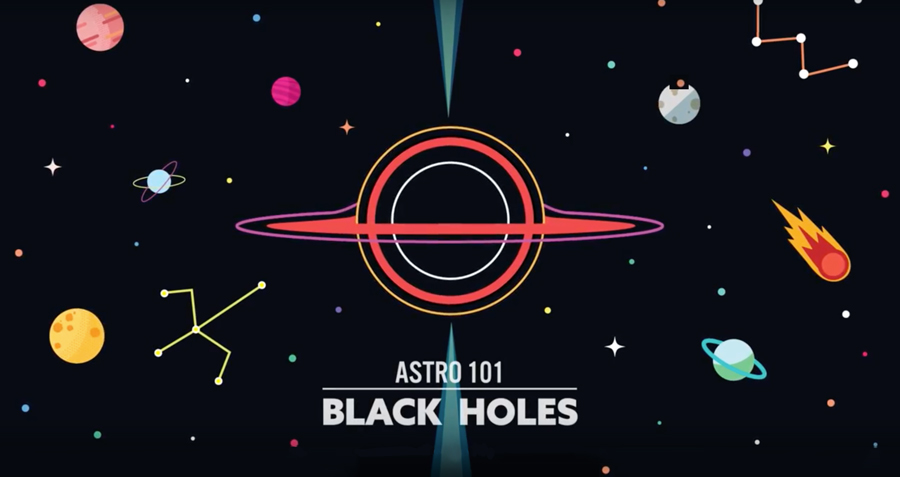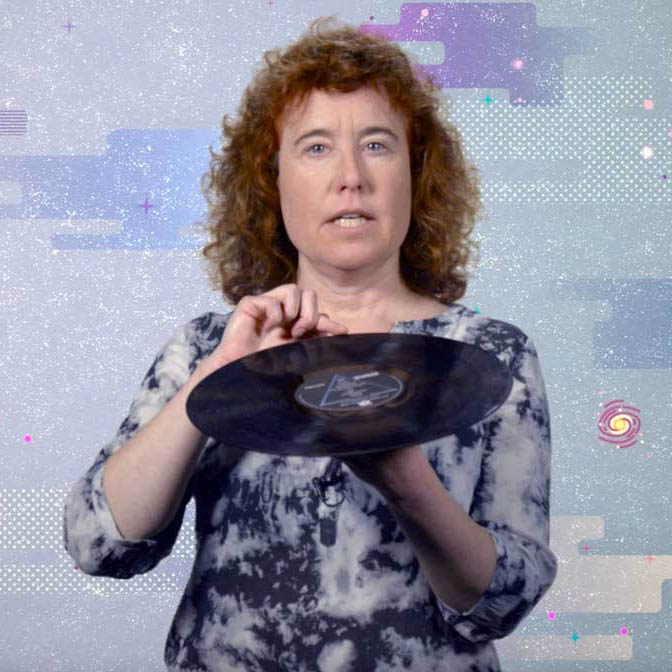
Astro 101: Black Holes
In Astro 101: Black Holes, you will explore the concepts behind black holes. Using the theme of black holes, you will learn the basic ideas of astronomy, relativity, and quantum physics.
Take online for free
Sign up for free on Coursera today or upgrade to get a certificate.
Take for credit
U of A students can sign up for ASTRO 101 (3 credits) and access the course through eClass.
About the Course
What is a black hole? Do they really exist? How do they form? How are they related to stars? What would happen if you fell into one? How do you see a black hole if they emit no light? What's the difference between a black hole and a really dark star? Could a particle accelerator create a black hole? Can a black hole also be a worm hole or a time machine?
Visit Astro 101 on Twitter and YouTube!
Taking the course as an Alberta junior high or high school student? Astro 101 content aligns with parts of the Alberta curriculum for Science 8, 9, and 30, and Physics 20 and 30. Learn how U of A MOOCs align with Alberta's secondary curricula.
Learning Outcomes
After completing this course, you will be able to:
- Describe the essential properties of black holes and differentiate between types.
- Compare black holes in popular culture to modern physics to distinguish science fact from science fiction.
- Recognize different types of stars and distinguish which stars can potentially become black holes.
- Characterize formation theories associated with each type of black hole.
- Identify different ways of detecting black holes, and appropriate technologies associated with each detection method.
- Summarize the puzzles facing black hole researchers in modern science.
Course Format
Prerequisites:
None! This course is designed for learners with elementary math skills and no prior physics background.
For the free Coursera version:
10 graded modules; one module per week. Pass all graded assignments to complete the course. Time Commitment: 2 hours/week
For the for-credit version:
10 graded modules; one module per week + additional exercises and exams.
Take the course for free & gain insight into black holes
Instructor
Sharon Morsink, Associate Professor
Department of Physics, University of Alberta
Sharon Morsink graduated with an Honours Physics BSc from the University of Waterloo, and a PhD in Theoretical Physics from the University of Alberta. Her theses (both for BSc and PhD) were on theoretical aspects of black holes. Over the years she has taught courses on many areas of physics and astronomy and has also conducted research on neutron stars and black holes.
Syllabus
Module 1 - Introduction to Black Holes
In this module, you will become familiar with the basic structure of a black hole, learn the terminology used to describe them, and explore the history of black hole physics.
Module 2 - Life and Death of a Star
Stars are the progenitors of black holes. In this module students will learn about the lifecycle of stars, how stars produce energy, and how they radiate away energy. We will explore the death of stars, and what is produced by the death of stars, on all scales ; from the building blocks of life (carbon) to black holes.
Module 3 - The Structure of Spacetime
What happens if you travel close to the speed of light? What happens to the passage of time as you fall towards a black hole? This module will explore relativity. We look at the many ways black holes affect the universe around them from discussions of reference frames through to the change in the passage of time as you approach a black hole.
Module 4 - Sizing Up Black Holes
In this module students will explore the various sizes of black holes and their measurable properties. Students will learn that there are four major types of astrophysical black holes (primordial/mini black hole's, stellar mass, intermediate mass and supermassive black holes), and discover current theories on their formation, and what might feed them. Students will also gain an knowledge of 'no-hair' theorem and gravitational lensing. We will also explore the formation of supermassive black holes, intermediate mass black holes, and mini black holes in particle accelerators.
Module 5 - Approaching a Black Hole
In this module students will follow material as it is transferred from a companion star to a black hole via Roche lobe overflow or wind fed accretion. They will then follow that material down through the accretion disc to explore tidal forces to learn about the ways in which black holes can rip apart surrounding material. This material will then pass through the innermost stable orbit of the disc, before falling in. Students will also get the opportunity to look at jets - the outflow of material from the innermost regions of this structure. Module Objective: Introduce properties of black holes from the outside in, through the context of a journey into the event horizon of a black hole. What would we see as we are far away? What will we see and experience as we get closer? What is a disc? What is a jet?
Module 6 - Crossing the Event Horizon
What would happen if you fell into a black hole? In this module students continue on their journey through a black hole binary system, from the innermost stable orbit of the accretion disc to the singularity itself. Students will learn about the structure of a basic black hole, as well as rotating black holes. Students will explore the concept of wormholes and singularities. Module Objectives: Students will learn about the innermost region around a black hole, about its lack of surface and about the presence and definition of an event horizon. Students will also explore the impact that spin can have on this region, and how it is measured. Finally they will look inside the event horizon to discover the basic concepts of singularities and wormholes.
Module 7 - Inside a Black Hole
This module will start to explore the theoretical side of black hole physics. You will receive a basic introduction to relevant topics of Quantum Mechanics and thermodynamics with the aim of understanding current black hole debates among the giants of the field.
Module 8 - Hunting for Black Holes
If black holes absorb all light, how do we see them? In this module, you will explore how astronomers observe real black holes, from studies of accretion discs and jets to the study of material orbiting a black hole.
Module 9 - Our Eyes in the Skies
Black holes change over time. This module will focus on how and why black holes change as well as how we look for these changes.
Module 10 - Riding the Gravity Wave
In this module students will be introduced to gravitational radiation. With the 2016 LIGO discovery of gravitational waves, a whole new branch of astronomy has been opened.
